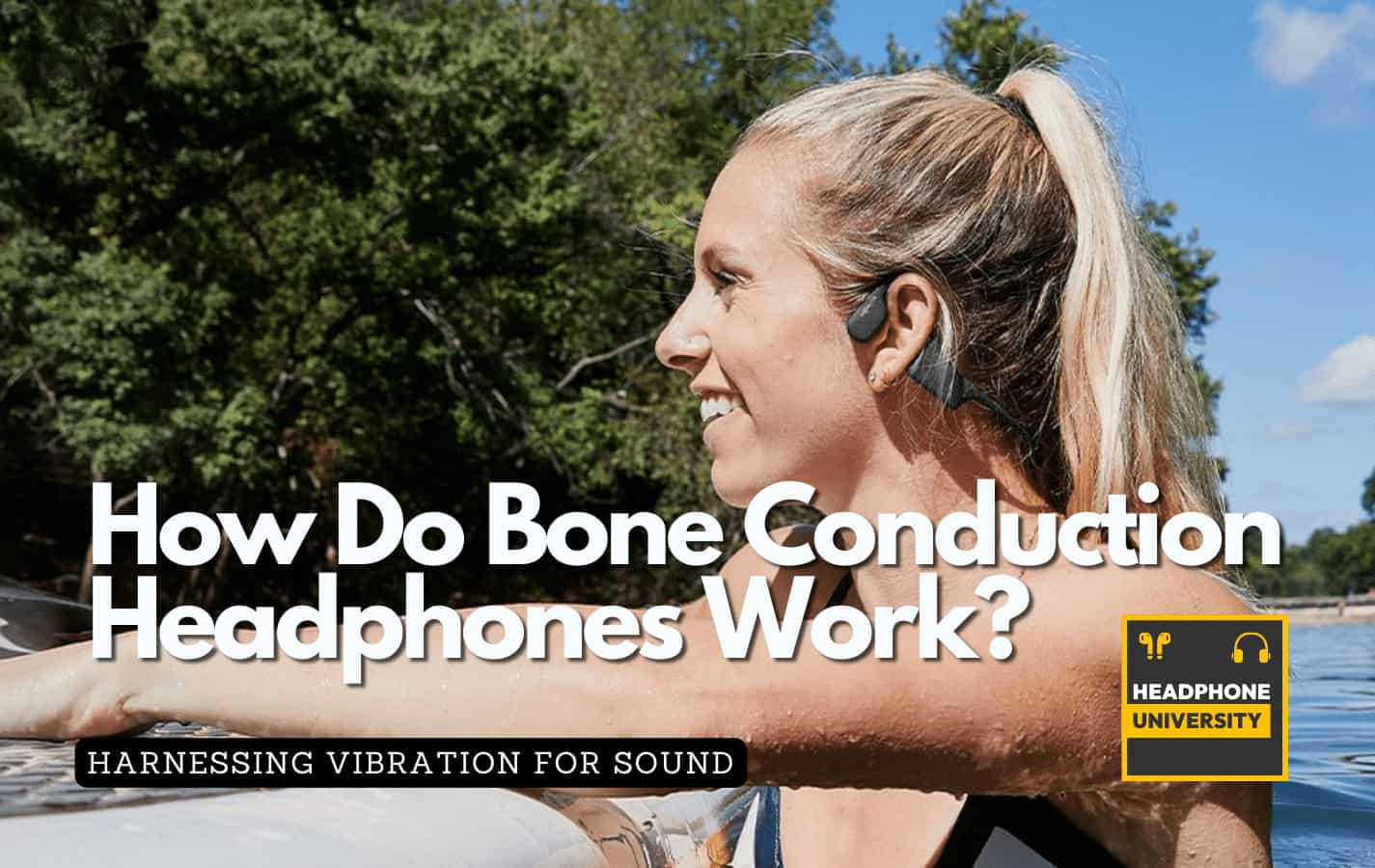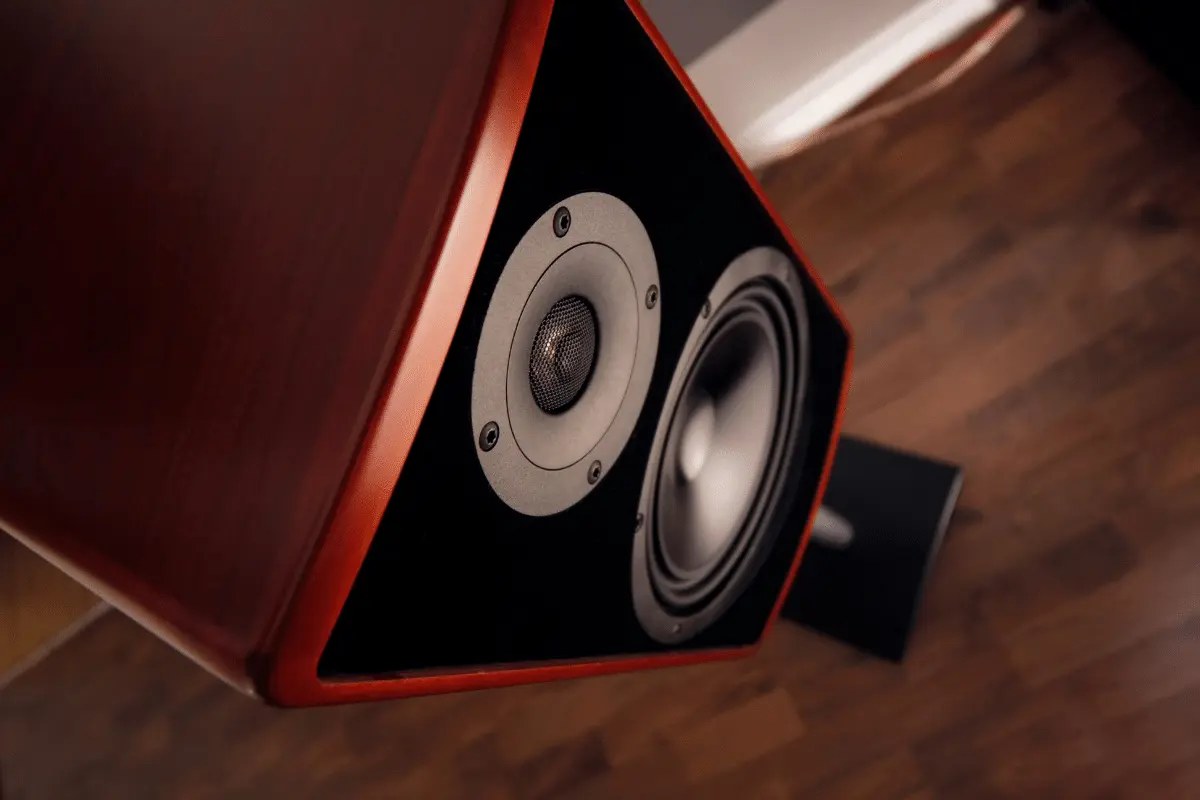Headphones are so widespread and generally understood by the average individual. However, the average person knows surprisingly little about bone conduction headphones and how they work. So, how do bone conduction headphones work?
The most straightforward answer is that bone conduction headphones use vibrations against bones to pass sound into the cochlea. These work differently than regular earphones, as instead of passing the vibrations of sound through the air, they’re passed through the bone.
Passing the waves through the bone causes them to miss the eardrums; thus, they can get around some hearing disabilities.
Of course, this is the simplest way to explain how bone-conduction earphones work. This technology is relatively looked over in the age of wireless headphones but has incredibly fascinating uses and innovation.
This technology started as early as the 1500s and has a history nearly as fascinating as the science behind it. Let’s discuss how bone-conduction headphones work.
How Do These Vibrations Get to the Cochlea?
Sound travels in waves through the air, much like light, but unlike light, sound can travel through much denser objects.
This is how you can hear the music from a neighbor’s room, and feel your walls shaking, but not see their light on through the wall.
Your ear picks up these waves by vibrating to pass the sound along inside, often starting with the eardrum.
The eardrum is a thin flap of skin that vibrates when sound waves hit it, and it causes other organs in the ear to vibrate. However, an essential part of the hearing is those vibrations being picked up by the cochlea.
When the eardrum and other organs in your ear begin to vibrate, the cochlea starts receiving all of the sound vibrations and passes them along to the stereocilia. From there, the stereocilia transform this input into signals they pass along to the brain.
In short, the vibrations from the eardrum pass throughout the ear, and in this relationship, it’s ultimately the signals the cochlea picks up that get sent to the brain.
How does this happen without the vibrations of the eardrums? This is where bone conduction comes in.
How Does Bone Conduction Skip the Eardrum?
This is a lot simpler with the knowledge above of how the inner ear works.
The eardrum is often where the vibrations start throughout your other little internal ear organs, but it isn’t necessary to conduct those vibrations.
However, without its input, all of the bones and organs inside your ear would remain static.
How do you bypass the need for the eardrum to start the other organs and bones vibrating?
Conducting the vibrations through bone instead of the eardrum causes it to avoid that need, triggering the vibrations in your ear’s inner organs by passing them through your skull.
These vibrations would work the same as the ones that are started by the eardrum because the cochlea does not know the difference.

Just like the process of hearing that is started through your eardrum, the cochlea sends these vibrations through the channels to your brain.
Your brain registers these sounds the same as they would through a traditional headphones.
There is a common misconception that bone conduction headphones are entirely silent. This isn’t true; these headphones are still audible but significantly less audible than the traditional earbuds are.
The difference is, they’re designed to send the sound waves through your skull instead of through the air.
How Did Bone Conduction Start?
The idea of bone conduction technology isn’t new, it was discovered as early as the 1500s, though there is reason to believe you can trace it back further.
Gerolamo Cardano, physician, philosopher, and mathematician, realized that you could hear through a rod and spear when you placed them between your teeth.
Even though he figured this out, the actual use of this for deaf and hearing-impaired individuals didn’t start until later.
Bone Conduction in Hearing Aids
Cardano’s findings were controversial at the time they were published, so it wasn’t for another several hundred years that they came back into public attention.
Some people theorize that this idea, the rod between the teeth, is how Beethoven could faintly hear what he was composing.
The theory proposes that he might have taken one end of a rod between his teeth and the other against the piano.
It wasn’t until the 1940s that the study of audiology became recognized as a science. This helped bone conduction be put into practice to help diagnose hearing disorders and support the hearing-impaired.
This led to the introduction of bone-anchored hearing aids (BAHA hearing aids) in the 1970s.
These implants allowed the user to hear through bone conduction; thus, if the problem were their eardrum, it would help them hear without it.
Is Bone Conduction Just for the Hearing Impaired?
This technology has been an absolute game-changer in the hearing-impaired and deaf communities, but it isn’t an exclusive technology.
The military has long used bone conducting technology, and it’s been found incredibly useful for the athletic community.
When running, cycling, and being outdoors working out, having bone conduction headphones instead of a traditional earphone allows you to hear passing cars and lets them be more aware of your surroundings.
There are limitless applications of the technology, however. They were used in Google Glass, education, law enforcement, construction, and even in scuba diving.
Thanks to their open-ear design, they’re considered comfortable to wear as well, which is just another addition to the list of their many benefits.
Can Bone Conduction Headphones Damage Your Hearing?
Yes. Simply put, they are equally as “dangerous” as average headphones. Some people claim that bone conduction headphones don’t risk damage to the ear because they bypass the eardrum.
Though this is true, the eardrum is not what you need to be concerned about. If you’re listening to music for extended periods at unnecessarily loud volumes, you need to worry about the cochlear taking damage.
This is true for both cochlear headphones, like bone headphones, and conventional headphones and neither is necessarily more dangerous than the other.
Both of them can cause damage to the cochlear if you’re careless with volume and duration of use.
What is the Audio Quality of Bone Conduction?
Truth be told, they don’t sound as clear as traditional headphones. It’s neither good nor bad, just different.
Unlike conventional headphones, they sound a little muffled and thus don’t give the noise-canceling crisp edges that many modern headphones sport.
They have their uses, and when you want to be more aware of your surroundings while listening to your music, these are still a preferred option for many.
They can be good for hands-free calls and for machinery workers outside of the needs of the hearing impaired.
If the quality of the audio is a priority, and you’re expecting it to be equivalent to regular headphones, you will be disappointed.
Comparing Bone Conduction Headphones and Traditional Headphones
Bone conduction headphones and traditional headphones serve the same purpose – to provide an audio experience – but they do so in fundamentally different ways.
Traditional headphones, whether they are over-ear, on-ear, or in-ear models, deliver sound through the air and into the ear canal, causing the eardrum to vibrate. This vibration then gets converted into electrical signals in the cochlea, which are sent to the brain to be interpreted as sound1.
Bone conduction headphones, on the other hand, bypass the eardrum altogether. Instead, they rest on your cheekbones and deliver sound through vibrations directly to the cochlea via the bones of the skull1.
Each type of headphone has its unique advantages. Traditional headphones typically offer superior sound quality, especially in terms of bass depth and high-frequency clarity. They can also provide an immersive audio experience, particularly if they have noise-canceling capabilities.
Bone conduction headphones, however, allow for environmental awareness. Since they don’t block the ear canal, users can still hear sounds around them while listening to the audio, which makes them a safer option for outdoor activities like running or cycling1. They also provide an alternative for people who find traditional headphones uncomfortable or for those with certain hearing impairments1.
Disadvantages of Bone Conduction Headphones
Despite their benefits, there are some drawbacks to using bone conduction headphones:
- Sound Quality: Bone conduction headphones generally can’t match the audio quality of traditional headphones. The sound can be somewhat muffled and lack the crisp edges that many modern headphones offer1.
- Bass Response: They are often reported to have poorer bass response compared to traditional headphones. This is because low-frequency sounds (bass) are better transmitted through air (as with traditional headphones) than through solids (as with bone conduction headphones).
- Comfort Over Time: Some users may find bone conduction headphones uncomfortable to wear for extended periods because they rest on the cheekbones rather than over or in the ears.
- Sound Leakage: Bone conduction headphones can have more sound leakage compared to traditional in-ear or over-ear headphones. This means people nearby might be able to hear the audio you’re listening to, particularly at higher volumes.
- Battery Life: Due to the technology involved, some bone conduction headphones may have shorter battery life compared to traditional headphones.
While bone conduction headphones have their unique strengths, it’s important to be aware of these potential drawbacks when considering them as an alternative to traditional headphones.
As with any product, understanding the pros and cons will help you make an informed decision that best suits your needs.
Final Thoughts on How Bone Conduction Headphones Work
Bone-conducting headphones are by no means new, but the technology is instrumental in diagnosing hearing impairments and solving them.
Thanks to the invention of technology, there is another- frequently safer- solution for runners and bikers.
Though they still pose the same “threat” to the cochlea as the traditional headphones, they leave the ear open for other input while remaining quiet.
All in all, this technology could help bypass the eardrum for the usage of those with hearing impairments and everyday users who need to be able to hear both the audio of the headphone and the world around them simultaneously.





Leave a Reply
You must be logged in to post a comment.